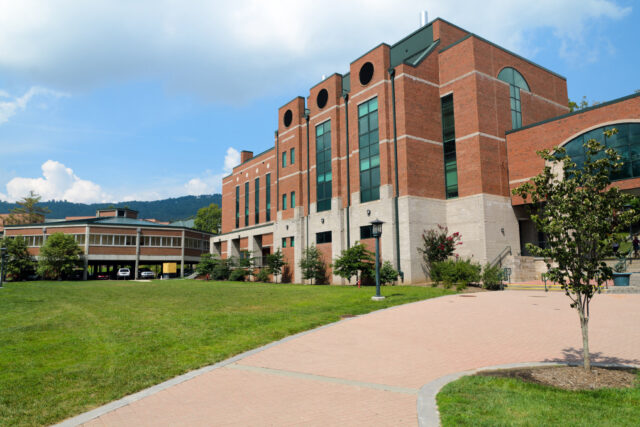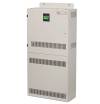Our team is here to support you and solve your power challenges. Connect with our responsive experts today to learn about our customized power solutions and products.
FastLITE Model FST (525W - 2.2kW)
Emergency Lighting Inverters UL924
Emergency lighting inverter with fast-transfer, high efficiency design.
The FastLITE Model FST is a fast-transfer (≤ 2 millisecond transfer time) emergency lighting inverter offered in wall-mount and floor-mount models, and has an efficiency rating of up to 98.8%! It is designed for LED fixtures / drivers, as well as all other emergency lighting loads. All models are provided with a “normally on” output and a “normally off / switched” output.
The Model FST meets the NFPA 101 definition of a computer-based, self-testing / self-diagnostic emergency lighting system with data-logging. Both periodic and annual tests are performed automatically, and the results are logged with a date and time stamp. Both alarm and test logs provide a history of events, and the ability to generate an NFPA-compliant report. In addition to periodic and annual testing, the Model FST performs a weekly self-diagnostic to assure reliability.
Whether fed from the AC power source or even while in battery mode, the Model FST has a peak overload capability of 1500% to accommodate inrush current from LED fixtures / drivers!
An “FST Interface Application” enables the Model FST to communicate directly with a computer, laptop, or Windows tablet. Customers can download this FREE interface program and interactive PDF user’s manual.
NFPA 101 and NFPA 111 compliance
Meeting the NFPA 101 and NFPA 111 standards, the Model FST is considered “Life Safety Equipment”. It is UL 924 listed as “Emergency Lighting Equipment”, providing the required 90 minutes of emergency backup power. Other runtimes up to 120 minutes are available. It is also C-UL listed to CSA C22.2 No. 141-15 with 30, 60, or 90 minutes.
Applications
- Schools / Universities
- Gymnasiums / Athletic Fields
- Parking Structures / Garages
- Hospitals / Clinics
- Office Buildings
- Shopping Malls
- Banks / Financial Institutions
- Hotels / Motels
- Restaurants
- Theaters
- Apartment Buildings
- Correctional Facilities
- Worship Facilities

Product Specifications
Features and Benefits
- Compatible with LED fixtures / drivers
- Available output “Surge Protection Device” (SPD) with status indicator and alarm; 40kA peak surge current rating protects LED lighting / drivers
- Up to 98.8% operating efficiency
- 90 minute battery runtime
- Optional 30, 60, and 120 minute battery runtimes
- “Normally On” output and “Normally Off / Switched” outputs
- “Normally Off” output can be energized by using an external on/off control device (e.g., wall switch or occupancy sensor). This allows the “Normally Off” output to be switched on/off when utility power is available. During utility failure and test modes (inverter on battery), this on/off control is overridden, and the “Normally Off” output is energized.
- Basic Monitor (LED indicators) or the Intellistat TS (touchscreen) Monitor, allowing access to user-programmable settings
- Weekly self-diagnostic (in addition to periodic and annual testing, per NFPA 101)
- Input breaker and (1) output circuit breaker
- Optional output distribution:
Up to (10) unmonitored or (6) monitored breakers on 120 VAC or 277 VAC units
Up to (3) monitored, fused switches on 347V units
(Consult factory for specific output breaker ratings) - Battery circuit breaker
- Low battery voltage disconnect
- Form C “General Alarm” relay contacts
- Form C “Battery Test Active” relay contacts
- USB communications port, allowing battery test and alarm logs to be viewed and electronically saved as an NFPA-compliant report
- Optional Intellistat TS network monitoring and reporting via BACnet/IP or BACnet MS/TP, Ethernet TCP/IP, MODBUS TCP, or MODBUS RS485
Performance Specs
- Nominal Input Voltage: 120V or 277V or 347V, 1 phase, 60 Hz
- Input Operating Voltage Range: Programmable ± 10% or +10%, -15% (without battery usage)
- Input Frequency: 60 Hz, ± 5% from nominal
- Output Power Rating: kVA at 1.0 power factor; kVA = kW
- Nominal Output Voltage: 120V or 277V or 347V, 1 phase, 60 Hz
- Output Voltage Regulation: ± 5% from nominal during full battery discharge, no load to full rated load
- Transfer Time: ≤ 2 milliseconds to and from battery
- Voltage Distortion: Maximum 3% THD while on battery, under linear load
- Battery Recharge Time: 12 hours (runtimes up to 90 minutes), UL 924 and CSA compliant
- Charger: 3-stage, 3.5 amps, temperature compensated
- Overload: Up to 110% for 2 minutes, 125% for 30 seconds, 150% for 10 seconds, 400% for 4 cycles while in battery operation mode
- LED Inrush Rating: Peak overload capability of 1500% when fed from AC power or on battery to accommodate inrush current from LED fixtures / drivers
- Efficiency: Up to 98.8%
- Operating Temperature: 20º to 30º C for UL 924 and C-UL Listed models; optimum battery performance and life at 25º C
- Audible Noise: 45 dB typical
Single Phase Sizes
- 525W, 750W, 1.1kW, 1.44kW, 1.5kW, 1.7kW, 2kW, 2.2kW
Frequently Asked Questions
What are fast-transfer emergency lighting inverters and why use them?
Fast-transfer lighting inverters supply utility power to feed the emergency lighting load under normal conditions. When a power outage occurs, emergency power is supplied to the load by the battery through the inverter. The transfer times to and from battery are typically under 2 milliseconds. This “fast-transfer” topology is preferred over slower “standby” inverters, while still providing the desired high efficiency operation.
Is the FastLITE Model FST capable of operating both normally off and normally on lighting fixtures?
YES! Each Model FST has a “normally on” output and a “normally off / switched” output. Factory- or field-installed output breakers can be wired to one or both outputs as needed, in any combination.
What is the benefit of the “normally off / switched” output?
The “normally off” output is typically dedicated for standby emergency lighting which illuminates only during utility failure and test modes. However, this output can also be energized by using an external on/off control device (such as a wall switch or occupancy sensor). This allows the “normally off” output to be switched on/off when utility power is available. Emergency fixtures can then function as a part of the normal lighting design. However, during utility failure and test modes (inverter on battery), this on/off control is overridden, and the “Normally Off” output is energized to illuminate emergency lighting.rn
Is the FastLITE Model FST NFPA 101 compliant?
YES! The Model FST meets NFPA 101, 7.9.3.1.3 u0022Periodic Testing of Emergency Lighting Equipmentu0022. It is defined as a computer-based, self-testing / self-diagnostic emergency lighting system with data-logging. Both periodic and annual tests are performed automatically, and the results are logged with a date and time stamp. Both alarm and test logs provide a history of events, and the ability to generate an NFPA-compliant report!
Are there self-diagnostics that differentiate the Model FST from standby and other fast-transfer inverters?
YES! In addition to performing the automatic periodic and annual tests mandated by NFPA 101, the Model FST performs a weekly self-diagnostic, without use of the battery. If the test fails, the unit will alarm, general alarm contacts will switch state, and the fault will be logged. After a test takes place or the unit goes to battery for any reason, the next test will automatically happen 7 days later. This self-diagnostic provides additional assurance that the Model FST is continuing its reliable operation.
Why is an Output Surge Protection Device (SPD) important?
More and more LED fixtures are being used for emergency lighting. LEDs require a driver circuit to illuminate, consisting of electronic components. Needless to say, power quality is important to ensure LED fixture reliability. The Model FST’s SPD has a 40kA peak surge current rating, offering real protection. The SPD option also includes a status indicator and alarm to continually advise if the SPD is fully operational. It’s important to note that most standby and other fast-transfer inverters offer limited to no protection from voltage surges and spikes. This lack of protection can lead to premature failure of emergency lighting.
Can all inverter systems handle the high inrush current associated with energizing normally off emergency fixtures?
No… not necessarily. Other manufacturers’ products may shut down if the high inrush current exceeds the inverter’s on battery overload rating. This is not the case with the Model FST. The Model FST has a peak overload capability of 1500% to accommodate inrush current from LED fixtures / drivers!

